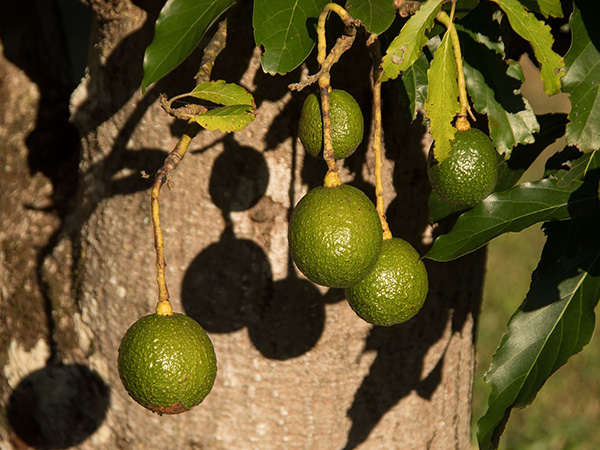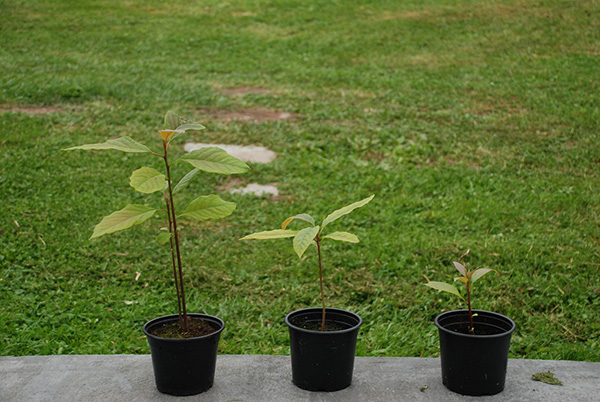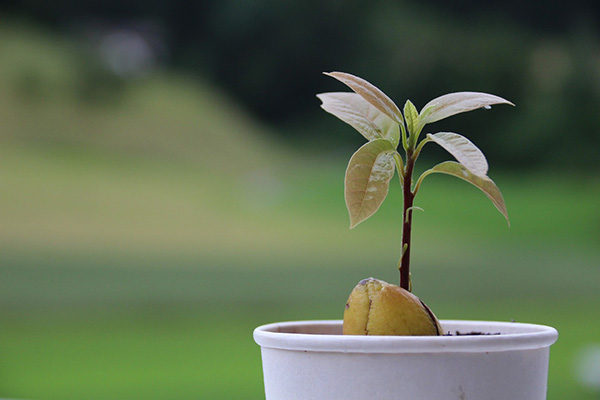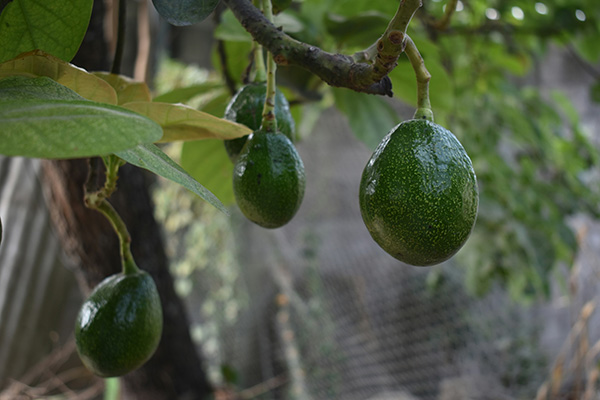Avocado trees, known for their creamy and nutritious fruits, have become a cherished addition to numerous gardens and homes. Whether you're an experienced gardener or a novice plant enthusiast, the idea of cultivating your own avocado tree is both thrilling and fulfilling.
In this comprehensive guide, we will dive into the world of avocado tree care, equipping you with the knowledge and skills needed to cultivate a healthy and bountiful avocado tree. From choosing the ideal variety to ensuring optimal growing conditions and addressing common challenges, we've got you covered. Whether you dream of harvesting creamy avocados for culinary creations or simply wish to enjoy the lush beauty of these trees in your landscape, this guide will be your trusted companion on your avocado-growing adventure.
Botanical Name
Common Name
Plant Type
Mature Size
Sun Requirement
Soil Type
Hardiness Zone
Pet Friendly
Persea americana
Avocado, Avocado Pear
Fruit Tree
40 to 80 feet tall
Full sun
Well-draining, fertile soil
9–11 USDA (can vary slightly based on the variety)
No (The leaves, fruit, seeds, and bark contain persin, a toxin that can cause vomiting and diarrhea in animals.)
What Is An Avocado Tree?
Avocado trees, scientifically identified as Persea americana, are tropical plants originating from South Central Mexico. Belonging to the Lauraceae family, which also includes aromatic trees and shrubs like bay laurel and cinnamon, avocado trees are primarily cultivated for their fruit—the avocado, often called the "alligator pear."
Characterized by glossy, dark green leaves that are elliptical or oblong in shape, avocado trees feature alternately arranged foliage. These trees produce small, inconspicuous greenish-yellow flowers. Notably, avocado flowers are perfect, possessing both male and female reproductive parts. However, they may not efficiently self-pollinate.
Avocado trees can vary in size, from manageable container-friendly varieties to larger trees that reach up to 30 feet (9 meters) in height when grown in the ground. With numerous avocado varieties, including Hass, Fuerte, Bacon, and Pinkerton, each offering unique characteristics, these trees are prized additions to gardens and landscapes in regions with suitable climates. However, they require specific care and growing conditions to thrive, making them a rewarding but sometimes challenging plant to cultivate.

Avocado Tree Varieties
Hass Avocado: Hass avocados are easily recognizable by their pebbly, dark green to purplish-black skin and creamy, pale green flesh. Renowned for their rich, nutty flavor and smooth, creamy texture, Hass avocados are among the most popular avocado varieties. They thrive in various climates but are most commonly grown in California, Mexico, and Chile. Hass avocados are the most commonly found and frequently appreciated by avocado enthusiasts.
Fuerte Avocado: Fuerte avocados are characterized by their pear-shaped appearance and smooth, medium-thick skin, transitioning from green to purplish when ripe. Internally, their flesh is creamy and exhibits a pale green color. Offering a slightly nutty taste and a smooth, creamy texture, Fuerte avocados are a favorite choice. They flourish in coastal areas of California and regions with a Mediterranean climate, making them well-suited for various environments.
Bacon Avocado: Bacon avocados are of medium size, characterized by smooth, thin skin that retains its green hue even when fully ripened. Renowned for their mild, buttery flavor and smooth texture, their creamy, pale yellow flesh distinguishes them. Although not as prevalent as Hass avocados, Bacon avocados are favored by individuals who enjoy a milder taste. They are frequently grown in California and some parts of Mexico.
Pinkerton Avocado: Pinkerton avocados are pear-shaped avocados with pebbly, medium-thick skin that remains green once ripened. Beneath the skin lies a creamy, pale green flesh. These avocados offer a rich, nutty flavor and a creamy texture similar to that of Hass avocados. Pinkerton avocados thrive in California and regions with a Mediterranean climate, making them an excellent choice for avocado enthusiasts.
Zutano Avocado: Zutano avocados feature pear-shaped fruit with smooth, thin, yellow-green skin. Inside, their pale green flesh is slightly fibrous. Known for their mild, slightly tangy flavor and firmer texture compared to other varieties, Zutano avocados are well-suited for warmer regions. They are commonly grown in Southern California and some parts of Florida.
Reed Avocado: Reed avocados are round to oval-shaped avocados with pebbly, thick, green skin that takes on a slight yellow hue when fully ripe. Inside, these avocados' creamy, pale yellow flesh is the hallmark. Offering a creamy texture and a flavor profile similar to Hass avocados, Reed avocados thrive in coastal areas of California and regions with a mild climate. They are a sought-after choice for avocado enthusiasts looking for a Hass-like experience.

Avocado Tree Care Requirements
Light
Avocado trees, known for their lush foliage and creamy fruits, demand abundant sunlight to thrive. Full sun exposure, equivalent to a minimum of 6 to 8 hours of direct sunlight daily, is essential for these trees. Sunlight is crucial for photosynthesis, allowing avocado trees to convert sunlight into energy and generate the sugars required for growth and fruit development.
When planting avocado trees, selecting a site in your garden or orchard that basks in full sun throughout the day, ensuring healthy foliage, encouraging blossoms, and facilitating the formation of avocado fruits is crucial. However, in regions with intense sun, providing some afternoon shade can protect young avocado trees from sunburn.
Additionally, safeguarding them from frost and cold during winter is essential, especially for young trees. Regular pruning and canopy management can further optimize sunlight distribution within the tree, supporting even fruit development. Whether planted in the ground or grown in containers, avocado trees flourish when bathed in sunlight, making them vital in their care.
Water
Avocado trees thrive when the soil around their roots maintains consistent moisture levels, although they are sensitive to overwatering. Young avocado trees, particularly during their first year, and any newly planted avocado tree need more frequent watering to establish robust root systems, typically every 2-3 days.
In contrast, mature avocado trees necessitate less frequent irrigation but thrive with deep and thorough watering when the top 2-4 inches of soil becomes dry. Ensuring that water penetrates the root zone is essential and may extend beyond the tree's drip line. Applying mulch around the base of the tree aids in retaining soil moisture and prevents excessive evaporation. Ensure there is a gap of several inches between the mulch and the tree trunk. While avocado trees are somewhat drought-tolerant once established, ongoing irrigation remains critical for optimal fruit production.
Temperature
Avocado trees thrive in regions characterized by a subtropical to tropical climate, where temperatures typically range between 60°F (16°C) and 85°F (29°C). These temperature conditions are optimal for their growth and fruit production. However, avocado trees are notably sensitive to frost, and temperatures below freezing can prove detrimental, especially for young trees. To protect them in areas prone to frost, it is crucial to take preventive measures such as covering them with frost blankets or using heat lamps during the colder months.
On the other hand, avocado trees can withstand high temperatures, but excessive heat can still impose stress on them. In such cases, providing shade during the hottest parts of the day, particularly for young trees, helps mitigate potential heat damage. Additionally, the choice of avocado variety can impact cold tolerance, with some varieties better suited for cooler climates. Ultimately, ensuring the right temperature conditions, protecting against frost, and considering microclimates within your region are pivotal factors in successful avocado tree cultivation.
Humidity
Avocado trees flourish in regions characterized by moderate humidity levels, making coastal areas and locations with stable humidity throughout the year particularly suitable for their growth. These trees are notably sensitive to excessively dry conditions, especially during their younger stages. In regions where dry winds prevail, such as desert areas, shielding avocado trees from these elements becomes crucial. The use of windbreaks or wind barriers can help maintain higher humidity levels around the trees and prevent stress.
Additionally, in dry climates or indoor settings with low humidity, it's advisable to take measures to increase moisture levels. Misting the foliage with water or using a humidifier for indoor-grown avocado trees can help ensure they receive the essential humidity required for their overall health and well-being. Monitoring the leaves for signs of stress, such as curling or browning at the edges, can provide valuable insights into the tree's humidity needs.
Soil
The soil requirements are crucial for the overall well-being and growth of avocado trees. Avocado trees prosper when planted in well-draining soil that prevents waterlogged roots, a condition that can lead to root rot.
Ideally, the soil should have a sandy loam or loamy texture with excellent drainage capabilities. Maintaining the appropriate pH level, which falls within the range of 6 to 7.5, is essential to ensure optimal nutrient uptake and overall tree health. Avocado trees greatly benefit from soil enriched with organic matter, such as compost or well-rotted manure, which enhances soil structure, moisture retention, and nutrient availability.
Furthermore, applying mulch around the base of the tree aids in retaining moisture, regulating temperature, suppressing weed growth, and contributing organic matter to the soil. Proper soil drainage, whether through raised beds or natural drainage, is crucial to prevent waterlogging. Regular soil testing allows for monitoring nutrient levels, ensuring that avocado trees receive the essential nutrients for robust growth and fruitful production.
For container-grown avocado trees, a well-draining potting mix designed for citrus or avocados, along with adequate pot drainage, is essential. Whether planted in the ground or in containers, adhering to these soil requirements is fundamental to the health and vitality of avocado trees.
Fertilization
When it comes to fertilizing avocado trees, it's essential to follow a specific schedule. During the initial year of growth, it is advisable to abstain from using any fertilizer. However, once your avocado tree has completed its first year, it's time to initiate a fertilization regimen. Opt for a well-balanced citrus tree fertilizer or a specialized avocado tree fertilizer. Whichever you select, make sure it boasts a high nitrogen content, as this nutrient is particularly important for the healthy growth of avocado trees.
Adding organic matter to the soil, such as compost or well-rotted manure, improves soil structure and offers a slow-release source of essential nutrients. Fertilizer applications are typically recommended in early spring and late summer, using balanced fertilizers formulated for citrus or avocado trees. These applications should be executed carefully, ensuring even distribution within the tree's drip line while avoiding direct contact with the trunk. Watering immediately after fertilization aids in nutrient penetration into the root zone.
For avocado trees in containers, controlled-release fertilizers designed for citrus or avocados are recommended. Regular soil testing aids in identifying potential nutrient deficiencies and guides targeted fertilization practices.

Propagation
Avocado tree propagation methods offer flexibility in growing these delightful fruit-bearing trees, each with its advantages and considerations. Here, we delve into each method in greater detail:
Avocado Pit
You can grow an avocado tree from an avocado seed. While the germination process of avocado seeds is simple and doesn't demand advanced skills, it's essential to acknowledge that avocado trees grown from seeds may not yield fruit true to the parent tree, as they can display variations in characteristics. Here is how to germinate an avocado tree from seed:
Seed germination is the most accessible and natural way to grow an avocado tree from scratch. It's a fun project for garden enthusiasts. Begin by removing the seed, or pit, from a ripe avocado fruit. Be sure to clean it thoroughly to remove any remaining fruit flesh.
To facilitate germination, pierce the seed with toothpicks and suspend it with the broad end submerged in water, creating an attractive centerpiece for your kitchen. Position the glass or jar in a warm, sunny location, as avocados thrive in sunlight.
Over several weeks to a few months, the seed will split, and a root system will emerge from the submerged end. Once the roots are well-established, typically reaching a few inches in length, it's time to transplant the young seedlings into a pot or directly into the ground.
Grafting
Grafting is a propagation method used to clone specific avocado plant varieties and ensure that the resulting tree inherits the desired traits. This approach is frequently employed in commercial avocado cultivation.
To perform grafting, you'll need a rootstock avocado tree (usually a hardy, disease-resistant variety) and a scion, which is a branch or bud from the avocado variety you wish to propagate. It's important to choose healthy specimens for both.
The procedure entails creating a clean diagonal cut on the rootstock and a corresponding cut on the scion. The key is to combine these two pieces, aligning their cambium layers, which is the green layer beneath the bark.
Grafting is a precise technique that requires some skill. Once the graft is secured, typically with grafting tape or rubber bands, it needs to be protected and kept moist until it takes, which can take several weeks to a few months. Successful grafting yields a tree that possesses the desired characteristics of the scion.
Pruning
Pruning avocado trees is a crucial practice to maintain their health and productivity. It involves selectively removing dead or crowded branches, promoting air circulation, and shaping the tree for easier maintenance. Pruning should be performed during late winter or early spring, avoiding periods of active growth. Regular pruning encourages new growth, enhances fruit production, and maintains an open canopy. Be cautious not to over-prune, as avocado trees are sensitive. Proper pruning helps achieve robust and healthy avocado trees, yielding a bountiful harvest of creamy, delicious fruit.
Harvesting
Harvesting avocados is an exciting moment for growers. Avocado fruits are typically ready to be picked when they have reached the desired size and have a slightly soft texture when gently squeezed. Harvesting is typically conducted by hand, with careful attention to avoid damaging the fruit and the tree. Avocados can be left to ripen off the tree. Harvesting time varies depending on the avocado variety and local climate, so close monitoring is essential to ensure that each avocado is picked at its peak of ripeness, ready to be enjoyed.

Common Problems And Troubleshooting
Poor Fruit Production
Among avocado tree growers, one of the most common concerns is poor fruit production, low fruit yield, or won't bear fruit. This can be frustrating, especially when you've been eagerly awaiting a harvest. However, avocado trees are known for their slow maturation, often taking several years to produce fruit. To tackle this issue, ensure your tree receives the appropriate amount of sunlight, typically requiring full sun exposure for most varieties. Proper fertilization with a balanced avocado fertilizer, regular pruning to maintain tree health, and avoiding water stress are essential steps. Moreover, some avocado varieties are self-pollinating, while others benefit from cross-pollination. Planting a different avocado variety nearby can help increase the fruit set.
Yellowing Leaves
Yellowing leaves on your avocado tree can indicate nutrient deficiencies, particularly nitrogen or iron. These shortcomings may result in stunted growth and a lack of vitality in the tree. To troubleshoot this issue, adjusting your fertilization regimen to provide the necessary nutrients is crucial. Apply a well-balanced avocado fertilizer and contemplate integrating organic matter into the soil to enhance nutrient availability. Additionally, ensure adequate drainage to avoid waterlogged roots, as this can worsen issues with nutrient uptake.
Leaf Browning or Scorching
Browning or scorching of the leaf edges is a common issue, often caused by excessive heat or strong winds. Avocado trees are sensitive to harsh environmental conditions, especially when they are young. To address this, provide shade during hot days, particularly for young trees that are more vulnerable. Adequate watering during dry and windy conditions is also crucial to maintaining leaf health and preventing stress-related damage.
Pests
Avocado trees can be susceptible to various pests, such as aphids, scale insects, and mites, which may infest leaves, stems, and fruit. These pests can cause damage to the tree and affect fruit quality. To troubleshoot, regularly inspect your tree for signs of infestation. Consider using horticultural oil or neem oil as organic pest control methods. Effectively pruning affected branches and disposing of them can also aid in managing pest populations.
Diseases
Avocado trees can suffer from diseases like root rot or fungal infections, often exacerbated by poor soil drainage or overwatering. To address this issue, improve soil drainage to prevent waterlogged roots. Be cautious not to overwater your tree. If fungal diseases persist, consider applying copper-based fungicides following the recommended guidelines. Promptly prune and remove affected branches to prevent the spread of diseases.
Sunburn
Sunburn can affect the trunk and branches of avocado trees, particularly in hot, sunny climates. Sunburn can weaken the tree and hinder its growth. To address issues, shield young trees from intense sunlight by providing shade during the hottest parts of the day. Whitewashing the trunk with a diluted paint solution can also help reflect sunlight and prevent sunburn damage.
Nutrient Deficiencies
Nutrient deficiencies, often indicated by yellowing or curling leaves, can hinder the growth and health of avocado trees. To tackle this problem, conduct a soil test to pinpoint specific nutrient imbalances. Adjust your fertilization program by using fertilizers formulated for avocados or citrus. Additionally, consider applying micronutrients like iron, magnesium, and manganese to correct deficiencies effectively through foliar sprays.
Root Issues
Declining tree health, poor growth, and leaf drop can be signs of root problems, including root rot or damage. To troubleshoot, inspect the root system for any signs of rot or damage. Improve soil drainage to prevent waterlogged roots, which can exacerbate root issues. In severe cases, consider replanting in well-draining soil or a raised bed to promote healthy root development.
Environmental Stress
Avocado trees can experience environmental stress from extreme temperatures or drought. Such stress can lead to poor growth and fruit production. To address this issue, protect from frost or excessive heat using covers or shade cloth. Ensure regular and sufficient watering, particularly during dry spells, to alleviate drought stress and uphold tree health.
Lack of Pollination
Your avocado tree may produce flowers but not set fruit, a phenomenon often attributed to inadequate pollination. Avocado trees often require cross-pollination, with some varieties being self-pollinating. To address this issue, consider planting a different avocado variety nearby to enhance the likelihood of successful pollination. Additionally, you can hand-pollinate flowers using a soft brush to transfer pollen from one flower to another.
